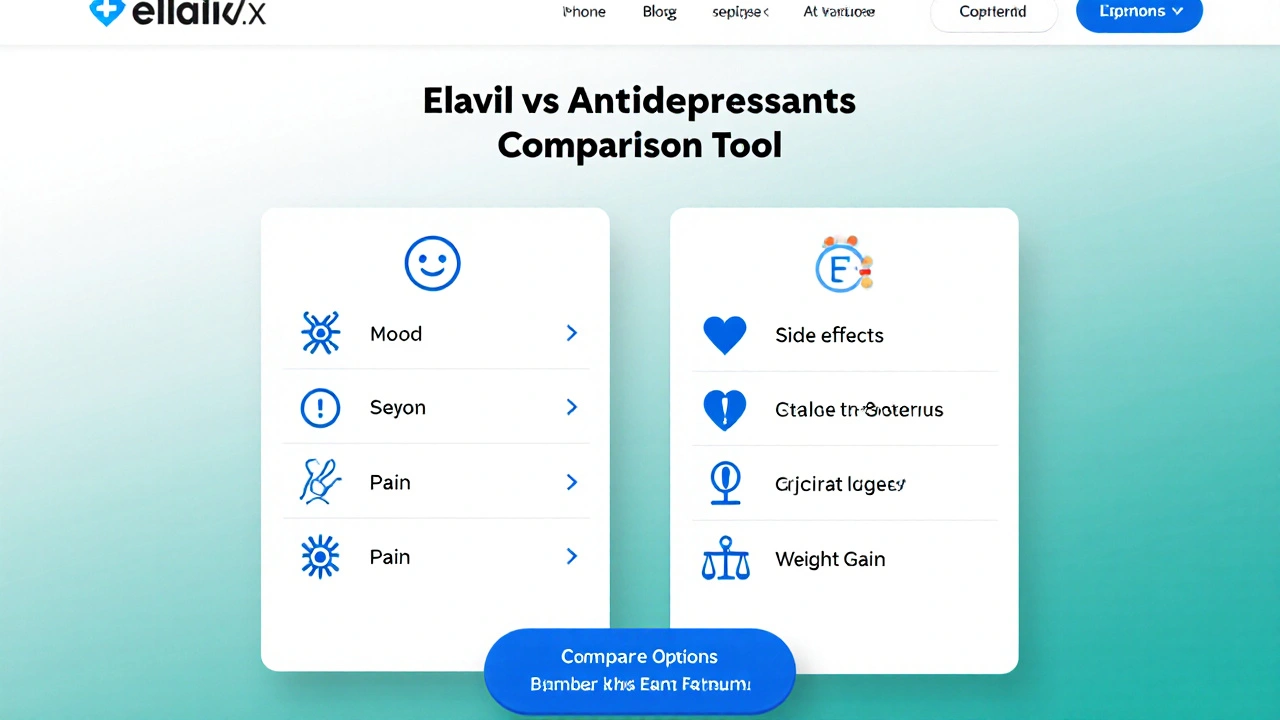When searching for a best Elavel substitute, a medication that can replace amitriptyline for depression, anxiety, or chronic pain. Also known as amitriptyline alternative, it aims to give similar benefits while lowering the risk of dry mouth, sedation, or heart issues. The original drug, Elavil (amitriptyline), a tricyclic antidepressant used for mood disorders and neuropathic pain, belongs to the broader class of tricyclic antidepressants, older agents that work by boosting norepinephrine and serotonin levels. Because tricyclics can affect heart rhythm and cause weight gain, many patients and doctors look for a safer swap. Choosing a substitute involves matching the therapeutic goal – whether it’s mood lift, sleep aid, or pain control – with a drug that fits the person’s health profile. In short, an effective best Elavil substitute should keep the upside of amitriptyline while trimming the downside.
One of the biggest reasons to seek an alternative is side‑effect tolerance. SNRIs, serotonin‑norepinephrine reuptake inhibitors such as venlafaxine or duloxetine, provide a similar boost to both neurotransmitters but usually cause less sedation and fewer cardiac concerns. SSRIs, selective serotonin reuptake inhibitors like sertraline or escitalopram, focus only on serotonin, making them a go‑to for people who can’t handle the norepinephrine surge. Other options like mirtazapine, a tetracyclic antidepressant that increases norepinephrine and serotonin indirectly, work well for patients who also need appetite stimulation or sleep support. Each class has distinct attributes: dosing frequency, cost, interaction profile, and specific side‑effect patterns. For example, SNRIs often need a gradual titration to avoid blood‑pressure spikes, while SSRIs may trigger mild gastrointestinal upset at the start. By comparing these traits, you can pinpoint the substitute that aligns with your medical history and lifestyle.
Beyond side‑effects, the decision also hinges on how the drug handles chronic pain. Amitriptyline’s analgesic action comes from blocking certain pain pathways, a feature not all antidepressants share. Duloxetine, an SNRI, has strong evidence for diabetic peripheral neuropathy and fibromyalgia, making it a solid pain‑focused alternative. If you’re after a purely mood‑lifting effect without much analgesia, an SSRI like escitalopram could be sufficient. Cost plays a role too; many generic SNRIs and SSRIs are cheaper than brand‑name amitriptyline, especially online or through pharmacy discount programs. Finally, the prescribing context matters – some doctors prefer staying within the same drug class for insurance reasons, while others are ready to jump to a newer mechanism. By understanding the therapeutic goal, side‑effect tolerance, pain‑relief needs, and financial considerations, you can choose a substitute that feels like a natural fit. Below you’ll discover a curated list of articles that dive deep into each alternative, compare dosing strategies, and share real‑world tips to help you make an informed switch.

Explore how Elavil (Amitriptyline) measures up against popular antidepressant alternatives, with side‑effect comparisons, costs, and a practical switch guide.
